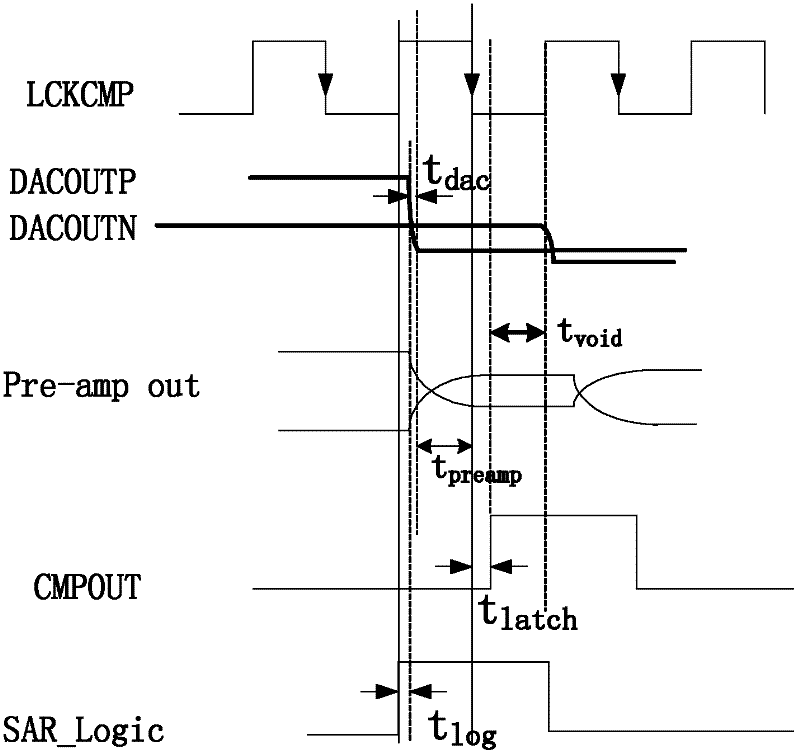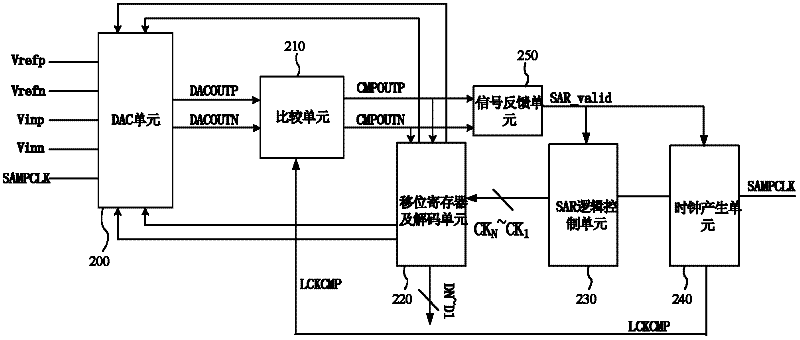Successive approximation register analog-digital converter
A successive approximation, analog-to-digital converter technology, applied in analog-to-digital conversion, instrument, code conversion, etc., can solve the problem of low working speed and achieve the effect of improving working speed
- Summary
- Abstract
- Description
- Claims
- Application Information
AI Technical Summary
Problems solved by technology
Method used
Image
Examples
Embodiment Construction
[0021] The inventor of the present invention finds that in the existing SAR ADC structure, every time an analog-to-digital conversion is completed, there is an unavoidable idle time in the whole working unit, which makes it difficult for the working speed of the SAR ADC to be higher than 5Msps (5 million samples per second) Second-rate). The reason is that, in the existing SAR ADC structure, the conversion time for completing an analog voltage to digital conversion consists of a sampling time P and a shift time T. Specifically, such as figure 1 and figure 2 As shown, the clock generation unit 140 receives an external main clock, and then generates sub-clocks such as synchronous latch clock LCKCMP and SAR logic control clock through frequency division. In the first two cycles of the main clock, the sample / hold circuit in the DAC unit 100 samples / holds the differential input signal Vin, and outputs the differential signal to the comparison unit 110 for amplification, comparis...
PUM
 Login to View More
Login to View More Abstract
Description
Claims
Application Information
 Login to View More
Login to View More - R&D
- Intellectual Property
- Life Sciences
- Materials
- Tech Scout
- Unparalleled Data Quality
- Higher Quality Content
- 60% Fewer Hallucinations
Browse by: Latest US Patents, China's latest patents, Technical Efficacy Thesaurus, Application Domain, Technology Topic, Popular Technical Reports.
© 2025 PatSnap. All rights reserved.Legal|Privacy policy|Modern Slavery Act Transparency Statement|Sitemap|About US| Contact US: help@patsnap.com



